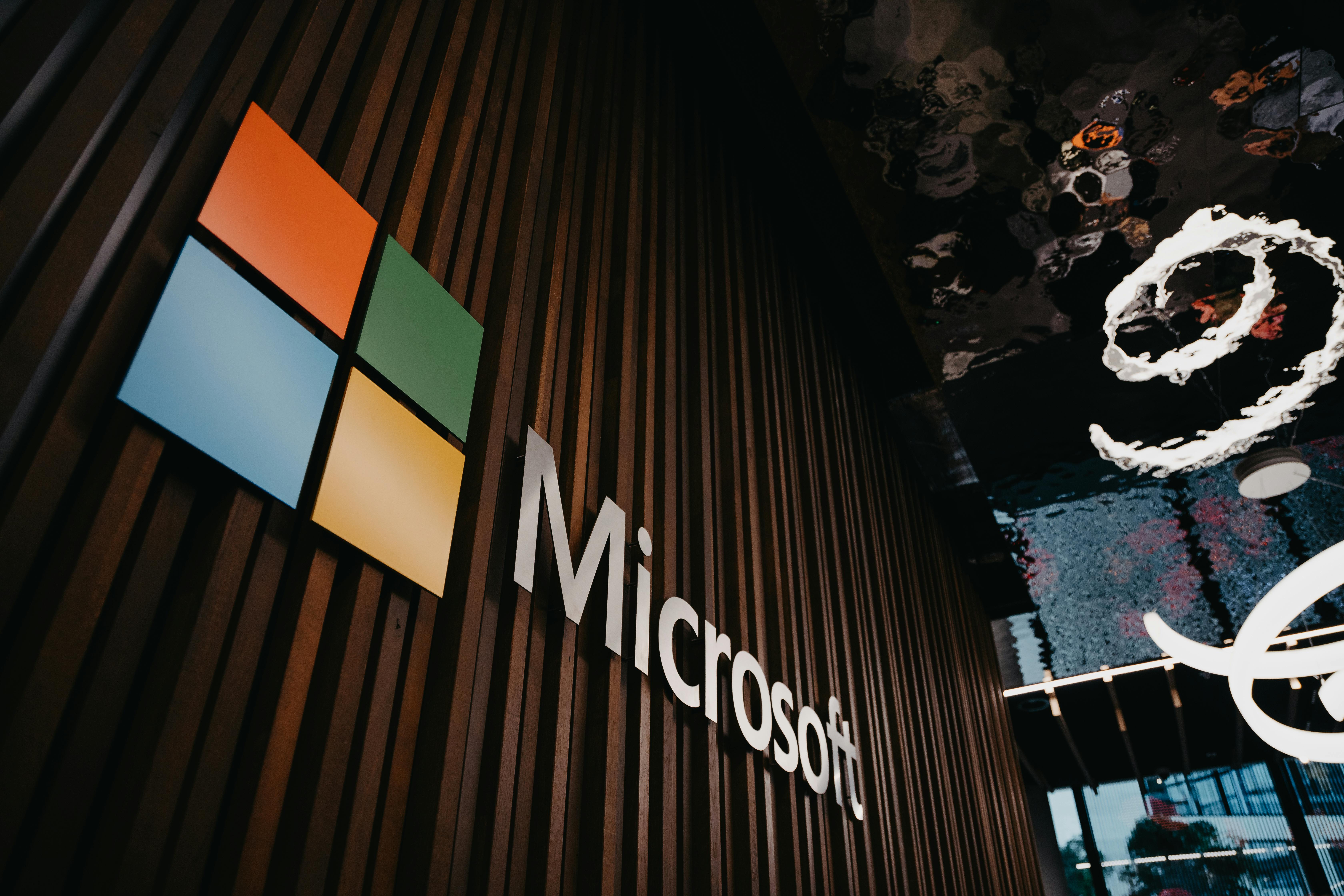Lead Generation
What are the 7 Main Differences Between B2B and B2C
Find out key differences between B2B and B2C models, including target audiences and sales processes. Optimize your marketing strategies for success.
Sep 20, 2024

Businesses often operate in distinctly different realms, especially in B2B and B2C marketing. These acronyms might sound like secret codes, but they're actually key to understanding how companies interact with their customers.
Whether you're a budding entrepreneur or just curious about the business world, knowing the differences between B2B and B2C can be a game-changer. It's like revealing a new level in the world of commerce!
Ready to immerse and discover the seven key distinctions that set these two apart? Trust us, by the end of this article, you'll be seeing the business world through a whole new lens.
Understanding B2B and B2C Business Models
B2B and B2C business models are two distinct approaches to commerce, each with its own unique characteristics and strategies. B2B, or business-to-business, focuses on transactions between companies, while B2C, or business-to-consumer, targets individual customers. Understanding these models is crucial for developing effective marketing and sales strategies.
Target Audience
B2B businesses cater to other companies, emphasizing long-term relationships and tailored solutions. They focus on decision-makers within organizations who have specific needs and requirements. For example, a software company selling enterprise-level solutions targets IT managers or CTOs.
B2C companies, on the other hand, aim to reach individual consumers. They prioritize creating a wide range of products or services and ensuring a smooth shopping experience. Think of popular e-commerce platforms like Amazon or brick-and-mortar stores like Target.
Price Structure and Sales Cycle
In B2B transactions, prices are often higher, and sales cycles are longer. This is due to the complexity of products or services and the need for multiple decision-makers to approve purchases. B2B deals can take months or even years to close.
B2C transactions typically involve lower price points and shorter sales cycles. Consumers make decisions more quickly, often based on immediate needs or desires. A clothing retailer, for instance, might see a customer browse, try on, and purchase an item in a single visit.
Longevity and Complexity

B2B relationships tend to be long-term commitments. Companies invest time and resources in integrating products or services into their operations. This creates a high switching cost, making it less likely for businesses to change providers frequently.
B2C interactions focus more on short-term satisfaction. While brand loyalty exists, consumers can easily switch between products or services based on factors like price, convenience, or personal preference.
Required Insights
To succeed in B2B, you need in-depth knowledge of your buyers' needs, mission, and industry challenges. This allows you to offer tailored solutions that address specific pain points.
In B2C, understanding consumers' lifestyles, desires, and purchasing habits is key. This knowledge helps create marketing campaigns that resonate with target audiences and drive sales.
By recognizing these differences, you can better tailor your approach to your specific market, whether you're targeting businesses or individual consumers. Remember, the key to success in both models lies in understanding your audience and delivering value that meets their unique needs.
Customer Base and Target Audience
B2B and B2C businesses cater to distinctly different customer bases, shaping their marketing strategies and operational approaches. Here's a closer look at these differences:
B2B: Businesses as Customers
B2B companies target other businesses as their primary customers. These organizations sell products or services that help other companies operate more efficiently or profitably. Examples include:
Software companies offering enterprise solutions
Manufacturing firms supplying industrial equipment
Business consultancies providing strategic advice
In B2B transactions, decision-makers often include multiple stakeholders, such as C-level executives, department heads, and procurement teams. The sales process typically involves:
Longer sales cycles, sometimes lasting months or even years
Higher-value transactions with more complex pricing structures
Emphasis on building long-term relationships and partnerships
When reaching out to B2B prospects via cold email or LinkedIn, focus on:
Demonstrating industry expertise
Highlighting specific pain points your product solves
Providing case studies or success stories from similar companies
Offering personalized demos or consultations
B2C: Individual Consumers
B2C businesses sell products or services directly to individual consumers for personal use. This market encompasses a wide range of industries, including:
Retail stores (both online and brick-and-mortar)
Restaurants and food service
Entertainment and media companies
B2C transactions are generally characterized by:
Shorter sales cycles, often completed in a single interaction
Lower price points compared to B2B offerings
Focus on immediate satisfaction and emotional appeal
When marketing to B2C customers, consider these strategies:
Emphasizing product benefits and lifestyle enhancements
Creating engaging content across social media platforms
Offering promotions, discounts, or loyalty programs
Streamlining the purchasing process for convenience
Understanding these fundamental differences in customer base and target audience is crucial for tailoring your outreach efforts effectively, whether you're in the B2B or B2C space.
Sales Process and Buying Cycle
The sales process and buying cycle differ significantly between B2B and B2C markets. These differences stem from the unique characteristics of each market and their respective customer bases.
B2B: Longer and More Complex
B2B sales processes are characterized by their length and complexity. The B2B sales cycle typically extends over a longer period, often taking months or even years to complete. This extended timeline is due to several factors:
Trust-building: B2B transactions involve establishing trust and rapport with potential clients. This process takes time as businesses need to feel confident in their partners' reliability and expertise.
Needs investigation: B2B sales representatives conduct thorough investigations to understand the specific needs and challenges of their potential clients. This process involves multiple meetings, discussions, and often, customized proposals.
Multiple decision-makers: B2B purchases often require approval from various stakeholders within an organization. This can include department heads, finance teams, and C-level executives, each with their own concerns and priorities.
Higher stakes: With B2B transactions typically involving larger sums of money and long-term commitments, businesses are more cautious and thorough in their decision-making process.
Ongoing support: B2B relationships often extend beyond the initial sale, with continued support and services being a crucial part of the overall package.
B2C: Shorter and Simpler
In contrast, B2C sales processes are generally shorter and more straightforward. Key characteristics include:
Quicker decisions: Individual consumers typically make purchase decisions more rapidly, often within minutes or hours rather than months.
Emotional factors: B2C purchases are frequently driven by emotional factors such as desire, convenience, or impulse, rather than extensive logical analysis.
Limited stakeholders: Usually, only one or a few individuals are involved in the decision-making process, simplifying the sales cycle.
Lower financial commitment: B2C purchases generally involve smaller amounts of money, reducing the perceived risk and the need for extensive deliberation.
Immediate gratification: B2C customers often seek immediate solutions or satisfaction, leading to faster purchase decisions.
Understanding these differences is crucial for businesses to tailor their sales strategies effectively. B2B companies need to focus on building long-term relationships, providing in-depth information, and demonstrating long-term value. B2C businesses, on the other hand, should prioritize quick, convenient purchasing processes and appeal to emotional drivers.
Decision-Making Process
The decision-making process in B2B and B2C markets differs significantly, impacting how businesses approach sales and marketing strategies. Let's explore the unique characteristics of each:
B2B: Multiple Stakeholders
In B2B transactions, decision-making involves multiple stakeholders from various departments. Here's what you need to know:
Complexity: B2B decisions often require input from marketing, IT, finance, and management teams. This collaborative approach ensures alignment with company processes and objectives.
Long-term focus: Stakeholders prioritize long-term value and return on investment (ROI) over immediate gains.
Risk assessment: Multiple decision-makers help evaluate potential risks and benefits from different perspectives.
Consensus building: Reaching a final decision often involves negotiations and compromise among stakeholders.
Longer sales cycles: Due to the involvement of multiple parties, B2B sales cycles typically extend over weeks or months.
B2C: Individual or Household Decisions
B2C decision-making is generally simpler and more straightforward. Here's what sets it apart:
Personal interests: Individual consumers make decisions based on personal needs, wants, and preferences.
Emotional factors: B2C purchases often involve emotional triggers, such as desire, convenience, or brand loyalty.
Quick turnaround: Decisions are typically made faster, with shorter sales cycles compared to B2B.
Limited stakeholders: Usually, only one or two individuals are involved in the decision-making process.
Immediate satisfaction: B2C buyers focus on immediate benefits and gratification rather than long-term ROI.
Understanding these differences is crucial for tailoring your sales and marketing approaches. For B2B, focus on building relationships with multiple stakeholders and emphasizing long-term value. In B2C, appeal to individual needs and emotions while streamlining the decision-making process for quick conversions.
Product Complexity and Customization
B2B and B2C markets differ significantly in their approach to product complexity and customization. These differences stem from the unique needs and expectations of their respective target audiences.
B2B: Specialized and Tailored Solutions
B2B products are often highly specialized and tailored to meet specific business needs. Here's why:
Complex requirements: B2B customers typically have intricate operational needs that require customized solutions.
Integration: B2B products often need to integrate seamlessly with existing systems and processes.
Scalability: Solutions must be adaptable to accommodate business growth and changing requirements.
Long-term value: B2B customers prioritize products that offer sustained benefits and ROI over time.
For example, a B2B software company might develop a custom CRM system that integrates with a client's existing ERP and marketing automation tools. This level of customization ensures the product addresses the client's unique workflow and data management needs.
B2C: Standardized Products
B2C products, in contrast, are generally more standardized and less complex:
Mass appeal: B2C products cater to a broader audience with more generalized needs.
Ease of use: Simplicity and intuitive design are crucial for B2C products to attract and retain customers.
Quick adoption: B2C products are designed for immediate use with minimal setup or training.
Cost-effectiveness: Standardization allows for more efficient production and lower prices.
For instance, a B2C electronics company might offer a range of smartphones with pre-defined features and specifications. While some customization options may be available, the core product remains standardized to appeal to a wide range of consumers.
To succeed in B2B product development, focus on:
Conducting thorough needs assessments with potential clients
Offering modular solutions that can be tailored to specific requirements
Providing robust support and training for complex implementations
Emphasizing long-term value and ROI in your marketing efforts
For B2C product development, prioritize:
User-friendly designs that require minimal learning curve
Broad appeal with options to cater to different consumer segments
Quick setup and immediate gratification
Emotional appeal and lifestyle integration in your marketing strategies
By understanding these differences in product complexity and customization, you'll be better equipped to develop and market products that resonate with your target audience, whether it's businesses or individual consumers.
Pricing Strategies

Pricing strategies in B2B and B2C markets differ significantly due to their unique customer bases and sales processes. Here's how they compare:
B2B: Volume-Based and Negotiated Pricing
B2B pricing is often complex and tailored to each customer. You'll find:
Volume discounts: Larger orders typically come with better prices.
Customized pricing: Rates are negotiated based on specific client needs and long-term value.
Contract-based pricing: Prices are set for extended periods, often with built-in escalation clauses.
Value-based pricing: Prices reflect the ROI the product or service provides to the business customer.
For example, a software company might offer tiered pricing based on the number of users or customized packages for enterprise clients. This approach allows for flexibility and encourages larger, long-term commitments from business customers.
B2C: Fixed Retail Pricing
B2C pricing is generally more straightforward and standardized. Key aspects include:
Fixed prices: Products have set prices that apply to all consumers.
Promotional pricing: Short-term discounts or sales to attract customers.
Psychological pricing: Using prices ending in .99 or .95 to create a perception of value.
Bundle pricing: Offering multiple products together at a discounted rate.
For instance, a clothing retailer might use a combination of these strategies, such as setting fixed prices for regular items, running seasonal sales, and offering bundle deals like "Buy 2, Get 1 Free."
In B2C, pricing decisions are often influenced by factors like brand positioning, competitor prices, and consumer perception. The goal is to appeal to individual consumers' emotions and purchase triggers while maintaining profitability across a large customer base.
Understanding these pricing differences is crucial for developing effective marketing strategies in both B2B and B2C contexts. By aligning your pricing approach with your target market's expectations and decision-making processes, you'll be better positioned to attract and retain customers in either space.
Marketing Approaches
Marketing approaches in B2B and B2C sectors differ significantly due to their unique target audiences and business objectives. Let's explore the distinct strategies employed in each domain.
B2B: Relationship-Focused Marketing
B2B marketing prioritizes building long-term relationships and trust with other businesses. Here's how it typically works:
Targeted communication: B2B marketers focus on specific decision-makers within companies, tailoring their messages to address business needs and pain points.
Content marketing: Educational content like whitepapers, case studies, and industry reports showcase expertise and provide value to potential clients.
Personalization: Customized solutions and personalized communication are key to winning B2B contracts.
LinkedIn outreach: B2B marketers leverage LinkedIn's professional network to connect with potential clients, share insights, and nurture leads.
Cold email campaigns: Carefully crafted, personalized cold emails can be effective in reaching decision-makers and starting conversations.
Trade shows and events: These provide opportunities for face-to-face interactions, product demonstrations, and relationship building.
Thought leadership: Establishing your company as an industry expert through speaking engagements, webinars, and guest articles can attract high-value clients.
Remember, B2B marketing is about demonstrating how your product or service can solve specific business problems and improve operations. It's less about emotional appeal and more about logical, data-driven decision-making.
B2C: Mass Marketing and Branding
B2C marketing targets individual consumers and focuses on creating emotional connections and brand awareness. Here's what it involves:
Broad reach: B2C marketing aims to reach a wide audience through various channels like social media, TV, and print advertisements.
Emotional appeal: Campaigns often focus on how products make consumers feel or how they enhance their lifestyle.
Influencer partnerships: Collaborating with influencers can help reach target demographics and build trust with potential customers.
User-generated content: Encouraging customers to share their experiences with your product can create authentic social proof.
Social media engagement: Active presence on platforms like Instagram, Facebook, and TikTok helps build brand personality and connect with consumers.
Customer reviews and ratings: These play a crucial role in B2C purchasing decisions, so managing online reputation is vital.
Flash sales and promotions: Time-limited offers create urgency and drive immediate purchases in the B2C space.
B2C marketing is all about creating a strong brand identity and emotional connection with consumers. It's faster-paced than B2B marketing, with shorter sales cycles and more emphasis on immediate gratification.
When developing your marketing strategy, consider your target audience carefully. If you're in B2B, focus on building relationships and demonstrating long-term value. For B2C, concentrate on creating emotional connections and brand loyalty.
Partnering with Growleady can enhance your B2C efforts, offering insights and strategies that help you understand consumer needs and preferences, ensuring your marketing efforts resonate effectively.
Customer Relationship Management
Customer relationship management (CRM) strategies differ significantly between B2B and B2C sectors. These differences stem from the unique nature of business-to-business and business-to-consumer interactions, affecting how companies build and maintain relationships with their clients.
B2B: Long-Term Partnerships
B2B customer relationship management focuses on cultivating long-term partnerships. Here's why:
Extended Contracts: B2B relationships often involve multi-year contracts, requiring sustained engagement and support.
Personalized Solutions: Each business client has unique needs, demanding tailored solutions and dedicated account management.
High-Value Transactions: With larger deal sizes, B2B companies invest heavily in relationship-building to secure and retain clients.
Complex Decision-Making: Multiple stakeholders are involved in B2B purchases, necessitating nurturing relationships at various levels within the client organization.
To effectively manage B2B relationships:
Carry out a robust CRM system to track interactions, preferences, and contract details.
Assign dedicated account managers to provide personalized service and build deep client knowledge.
Offer regular business reviews and strategy sessions to align your services with client goals.
Provide educational resources and thought leadership content to demonstrate ongoing value.
B2C: Transactional Relationships
B2C customer relationship management typically involves more transactional, short-term interactions:
Quick Transactions: Consumer purchases are often one-time or infrequent, focusing on immediate satisfaction.
Standardized Support: B2C companies aim for efficient, scalable customer service to handle high volumes of inquiries.
Brand Loyalty: While repeat business is valuable, B2C relationships are less about individual connections and more about overall brand experience.
Emotional Factors: Consumer decisions are often influenced by emotions and immediate needs rather than long-term strategic considerations.
Effective B2C relationship management strategies include:
Implementing automated customer service tools like chatbots for quick issue resolution.
Using social media for real-time engagement and brand personality showcasing.
Developing loyalty programs to encourage repeat purchases and brand advocacy.
Personalizing marketing communications based on purchase history and preferences.
When managing B2C relationships, avoid the common mistake of treating all customers identically. While standardization is key for efficiency, some level of personalization can significantly enhance customer experience. For instance, use data analytics to segment your customer base and tailor your communications accordingly.
For both B2B and B2C, leveraging LinkedIn outreach and cold email campaigns can be effective for lead generation and relationship building. In B2B, use LinkedIn to connect with decision-makers and share industry insights. For B2C, focus on building a strong brand presence and engaging with consumers through targeted content.
Remember, the key to successful customer relationship management in both sectors is understanding your audience's specific needs and tailoring your approach accordingly. Whether you're nurturing long-term B2B partnerships or fostering brand loyalty in B2C, prioritize delivering value and maintaining open lines of communication.
Conclusion
Understanding the key differences between B2B and B2C models is crucial for business success. By recognizing these distinctions, you'll be better equipped to tailor your strategies and meet the unique needs of your target market. Whether you're operating in the B2B or B2C space, remember adaptability and customer-centricity are essential.
Embrace the specific challenges and opportunities each model presents and leverage the appropriate tools and techniques to maximize your business potential. With this knowledge, you're now ready to navigate the complexities of your chosen market and drive growth for your organization.
Frequently Asked Questions
What are the main differences between B2B and B2C business models?
B2B focuses on inter-company transactions, prioritizing long-term relationships and specific decision-makers. B2C targets individual consumers with a broad product range and seamless shopping experiences. B2B involves longer sales cycles and higher-value transactions, while B2C emphasizes quick decisions and immediate satisfaction.
How do sales processes differ in B2B and B2C markets?
B2B sales processes are longer and more complex, involving trust-building, needs investigation, multiple decision-makers, and ongoing support. B2C sales are shorter and simpler, driven by quicker decisions, emotional factors, limited stakeholders, lower financial commitments, and immediate gratification.
What characterizes decision-making in B2B versus B2C markets?
B2B decision-making involves multiple stakeholders, longer sales cycles, and a focus on long-term value and ROI. B2C decisions are made by individuals or households based on personal interests, emotional triggers, and immediate satisfaction, resulting in quicker sales cycles and limited stakeholders.
How do B2B and B2C products differ?
B2B products are specialized, tailored, and focused on long-term value. B2C products are standardized, mass-appealing, and designed for quick adoption. B2B product development emphasizes customization, while B2C focuses on simplicity and broad appeal.
What are the key differences in customer relationship management between B2B and B2C?
B2B focuses on long-term partnerships with extended contracts, personalized solutions, and complex decision-making processes. B2C involves more transactional, short-term interactions focusing on quick transactions, standardized support, brand loyalty, and emotional factors.
What strategies are effective for B2B customer relationship management?
Effective B2B strategies include implementing robust CRM systems, assigning dedicated account managers, conducting regular business reviews, and creating thought leadership content. LinkedIn outreach and cold email campaigns are also recommended for lead generation and relationship building.
How can B2C businesses effectively manage customer relationships?
B2C businesses can benefit from automated customer service tools, social media engagement, loyalty programs, and personalized marketing communications. Understanding specific audience needs and tailoring approaches to deliver value is crucial for successful B2C relationship management.

